Today (June 8th) is the great feast of Pentecost, when we remember the descent of the Holy Spirit on the Church following the Ascension of Christ. It is also the feast of St Levan, an obscure saint who lived as a hermit in Cornwall in the sixth century. I had never heard of St Levan until last month, when I had the pleasure of visiting St Levan’s holy well when I was on holiday in Cornwall last month. Enjoy!
In a county full of holy wells and spectacular coastal vistas, St Levan’s Well can make a decent claim to be the holy well with the best view. It’s not hard to find if you know where you’re going and don’t mind narrow Cornish lanes. To get there you have to drive through Porthcurno and follow the road until it ends at St Levan’s church. Opposite the church you will find a small footpath, which will take you across a small brook, then start winding up the hill past some hedgerows. Keep going and you’ll find the well perched atop a cliff overlooking Porthchapel beach. It’s a glorious spot, at least on a sunny day in spring. I’d imagine that it’s a bit less inviting on wild winter’s afternoon.
Water from the well was traditionally used for baptisms, and the water was also believed to cure toothache and eye diseases. The really committed (or really desperate) would sleep at the well to increase the chances of a cure - given the tiny size of the well this wouldn't have been very comfortable.
A little lower down the cliff lie the remains of the cell where St Levan reputedly lived, recorded in the place name "Porth Chapel". The stone steps down to the chapel were excavated in the 1930s but are no longer safe to use, so we didn’t actually visit the chapel. According to the internet, it was comprised of two small rooms built on platforms cut into the cliff face. It has been dated as early as the eighth century, which would make it the oldest Christian building in Cornwall. This dating also means the ruined cell was built a century or two later than St Levan is meant to have lived. Possibly it was rebuilt on the same site as an earlier cell, we really don’t know.
In fact, we don’t know much with any certainty about St Levan. There isn’t much by way of written records, at least nothing written early enough to have much credence. Sabine Baring-Gould identifies him as Selevan or Salomon, who might have been a Welsh prince, or maybe even a sub-king of Cornwall. Local oral tradition in the 19th century held that he was the brother of St Breage (also known as St Breaca), who is believed to have travelled from Ireland with several companions and evangelised Cornwall in the sixth century.
In other words, we really can’t say for sure who St Levan was, where he came from, or how he ended up living in a tiny stone chapel on the cliffs above Porthchapel beach. Reading about him and trying to construct his story made him feel oddly intangible, like a figment of the collective Cornish imagination.
So it was helpful to actually go to his holy well and be reminded that this at least is very real, so real that it is still there despite many long centuries passing since St Levan sat and prayed and fished. Maybe it doesn’t much matter who he was or where he came from. Maybe what matters is who he became and where he went.
Because what the various tales do appear to agree on is that someone lived alone in this little chapel on the cliffs. He devoted himself to prayer and fasting. He drank the water from the well, and ate fish which he caught on Porthchapel beach. And he made a big enough impact on the local population that he gave his (possibly misspelled) name to the village and the well.
Folklore & Legend
Firm details about St Levan’s life might be in short supply, but there is no shortage of Cornish folklore surrounding the saint and his well.
St Breage & The Two Chads
William Bottrell authored Traditions and Hearthside Stories of West Cornwall; Vol 2, in 1873, and recounts a slightly odd local legend about St Levan and St Breage:
An old habitation, in which, according to tradition, St. Levan dwelt, is still standing. This humble dwelling, situated in Bodellan, is on the eastern side of Parcurno Bottom, near its upper part within a hundred yards of the road, towards which stands the end that contains its sole fire-place. The hearthstone may still be there, much as it was when St. Levan's sister, the good midwife, St. Breage, cooked on it the fatal chads which choked her children.
The story says that good old St. Levan was one evening down -fishing from his accustomed place in Rospeltha cliff—still called Old St. Levan's Rocks. He cast in his hook-and-line, intending to take one fish only for his supper, from the multitude that always came around the rock on which he stood as soon as he cast in "browse" (garbage to attract fish). Contrary to St. Levan's wish, two chads, or young breams, fastened on his hook at the same time, and not to show favour to either he threw both of them into the sea again. And no sooner was: his hook-and-line in the waves a second time than the same chads, or two others, hooked themselves together again, and were again restored to the sea. For the third time he cast in his line; and, seeing two fishes on his hook again, he regarded this occurrence as a providential intimation that he was to take them both home, and acted accordingly. When he came to Bodellan he found that his sister, St. Breage, had just arrived with two children. The chads were boiled for supper, and St. Breage's hungry children, being careless of bones, got choked, and remembrance of this event is handed down in St. Levan's parish by chads being there called "chuck-cheeld" to this day.
I can’t quite fathom why in this story the children are punished with death because St Levan failed to respond to Providence sufficiently quickly. Like I said, it’s a bit of an odd tale.
The Ghostly Galleon of Porthcurno
Legend also has it that many years ago, when night would fall over Porthcurno, a ghostly ship would sail into the bay. But instead of stopping at the water’s edge, the unmanned ship would continue up the beach before disappearing at the church of St Levan.
The ship was said to be linked to a local man and his servant, who, years before, would row their boat out to sea, even during stormy weather. As well as sailing around Porthcurno Cove, the two men would hunt with a pack of invisible hounds. When the man died, he was taken to St Levan church to be buried. However, as soon as the priest spoke and the first earth was thrown onto the coffin, his servant vanished and the sound of hounds barking could be heard.
From that day onwards, no boat was ever kept in Porthcurno Cove. Which is in fact still true today.
St Levan’s Stone
On the south side of St Levan’s church, near the porch, is the rock known as St Levan's Stone. It is broken in two, and it was said that St Levan sat upon this rock when tired from fishing, Wishing to leave a memento of himself in connection with his rude but favourite seat, one day he gave it a blow with his staff and cracked it through. He prayed over the rock and uttered the following prophecy.
When with panniers astride,
A Pack Horse can ride,
Through St Levan's Stone,
The world will be done.
I did also manage to squeeze in a visit St Breage’s Church, in Breage, which contains some absolutely spectacular, and unusually well preserved, medieval wall paintings. You can read more about them here.
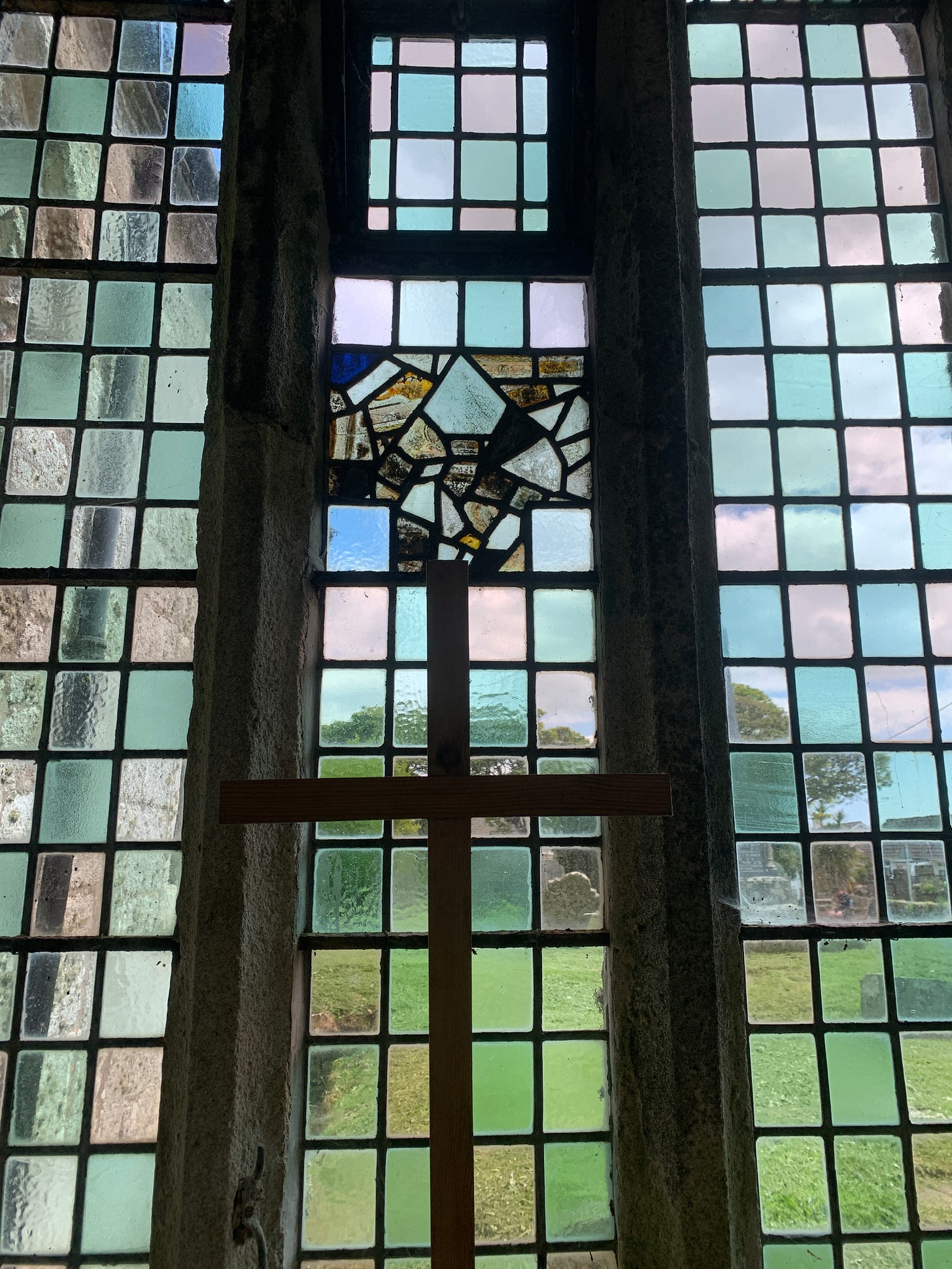




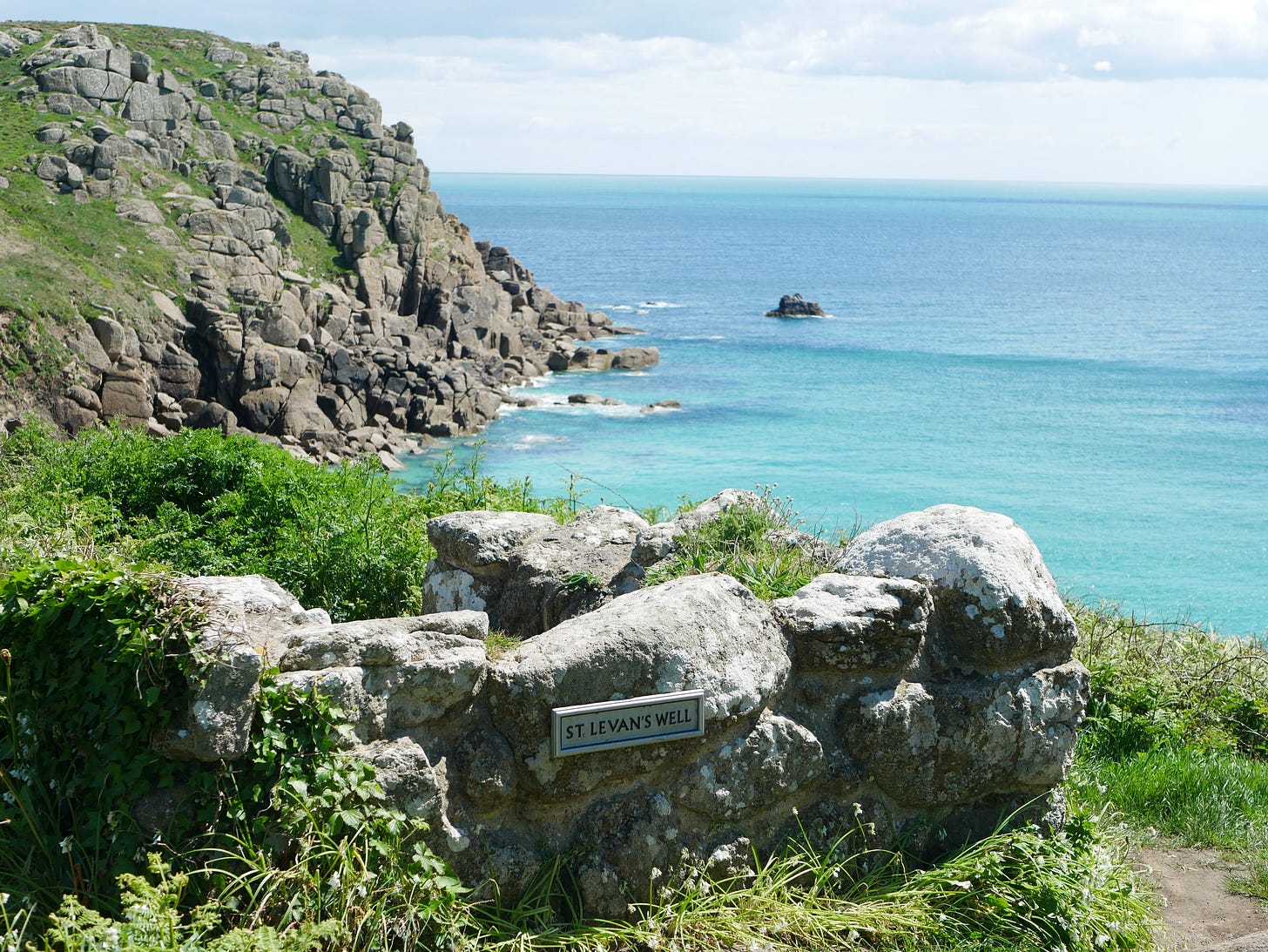
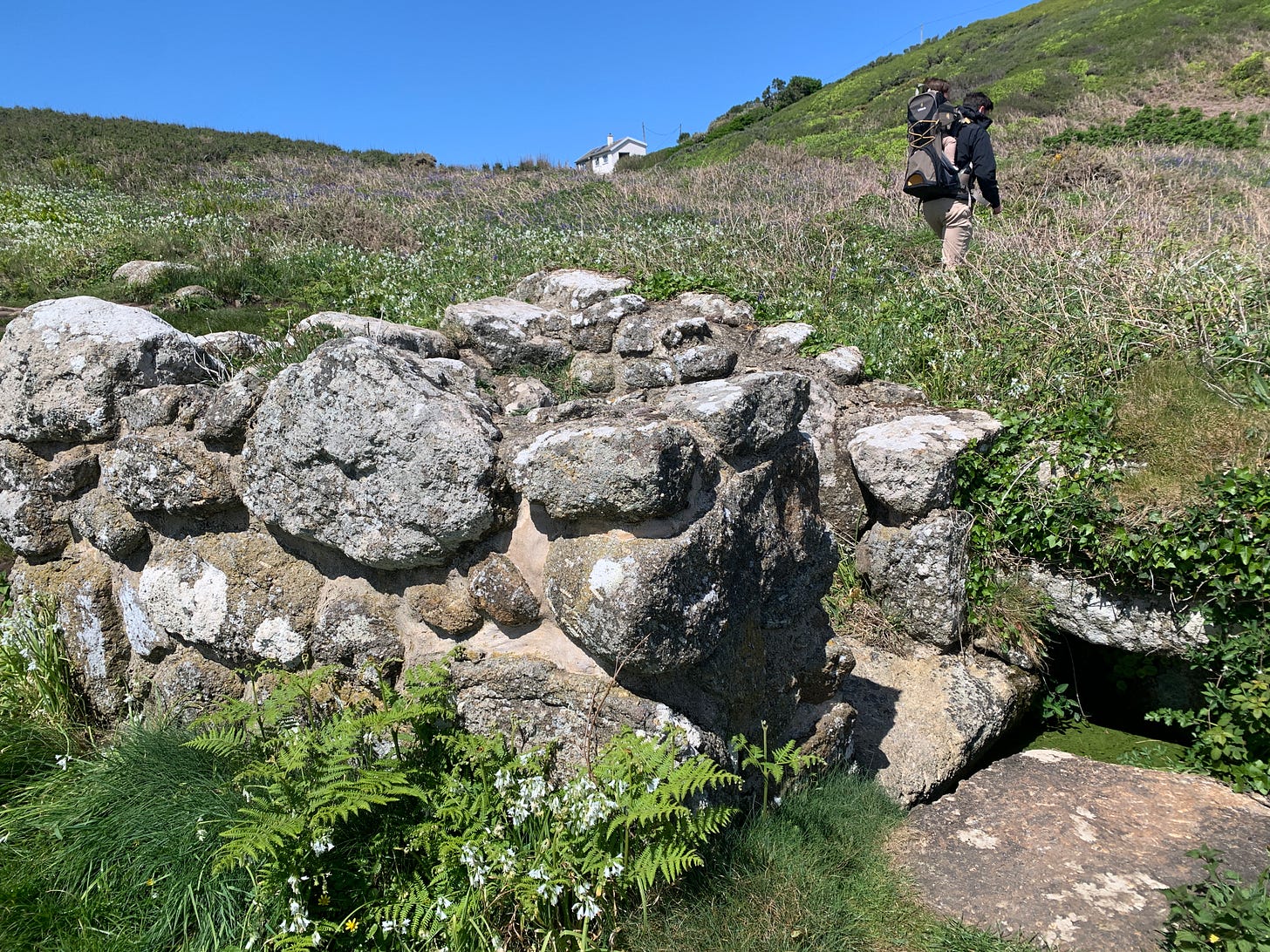
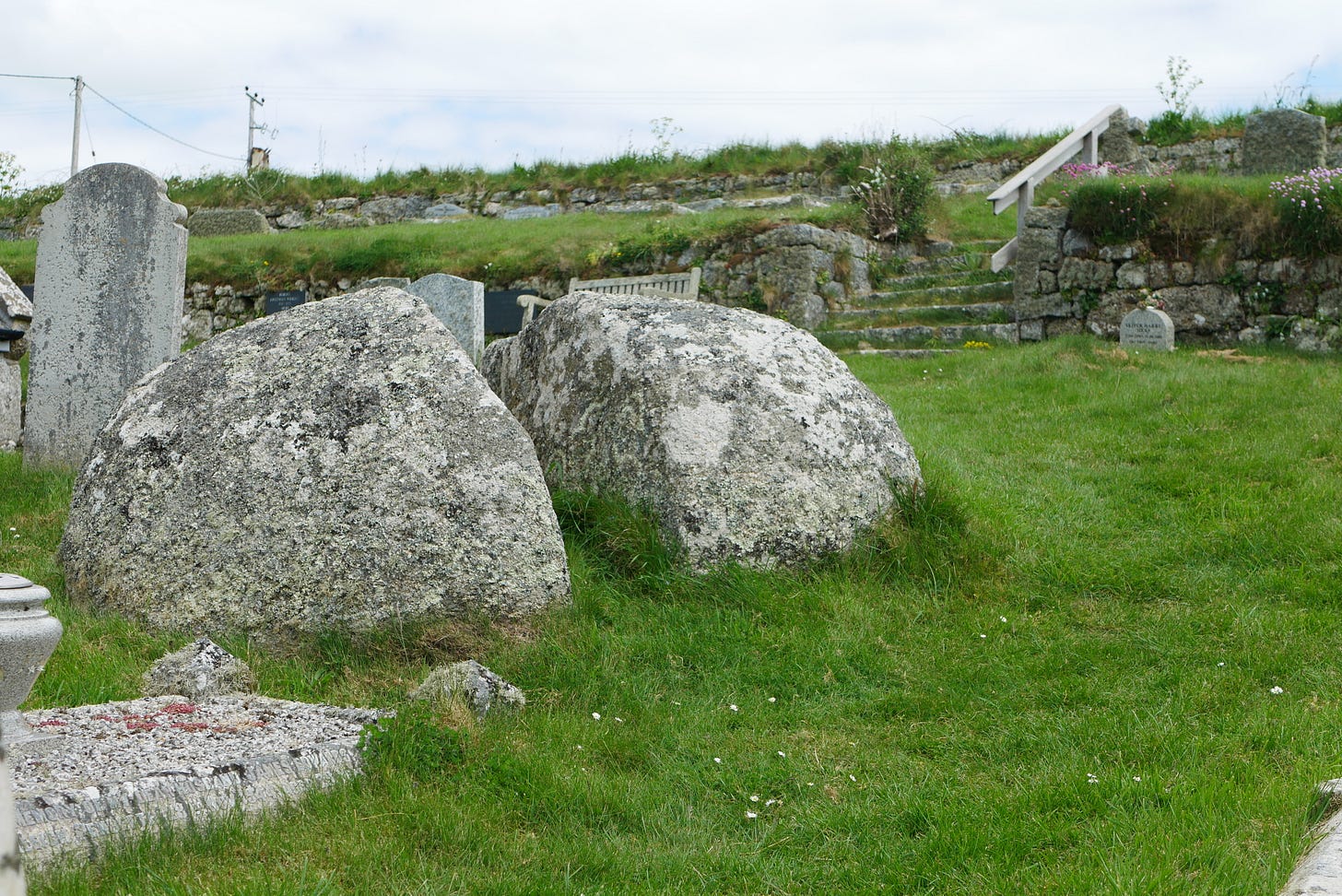
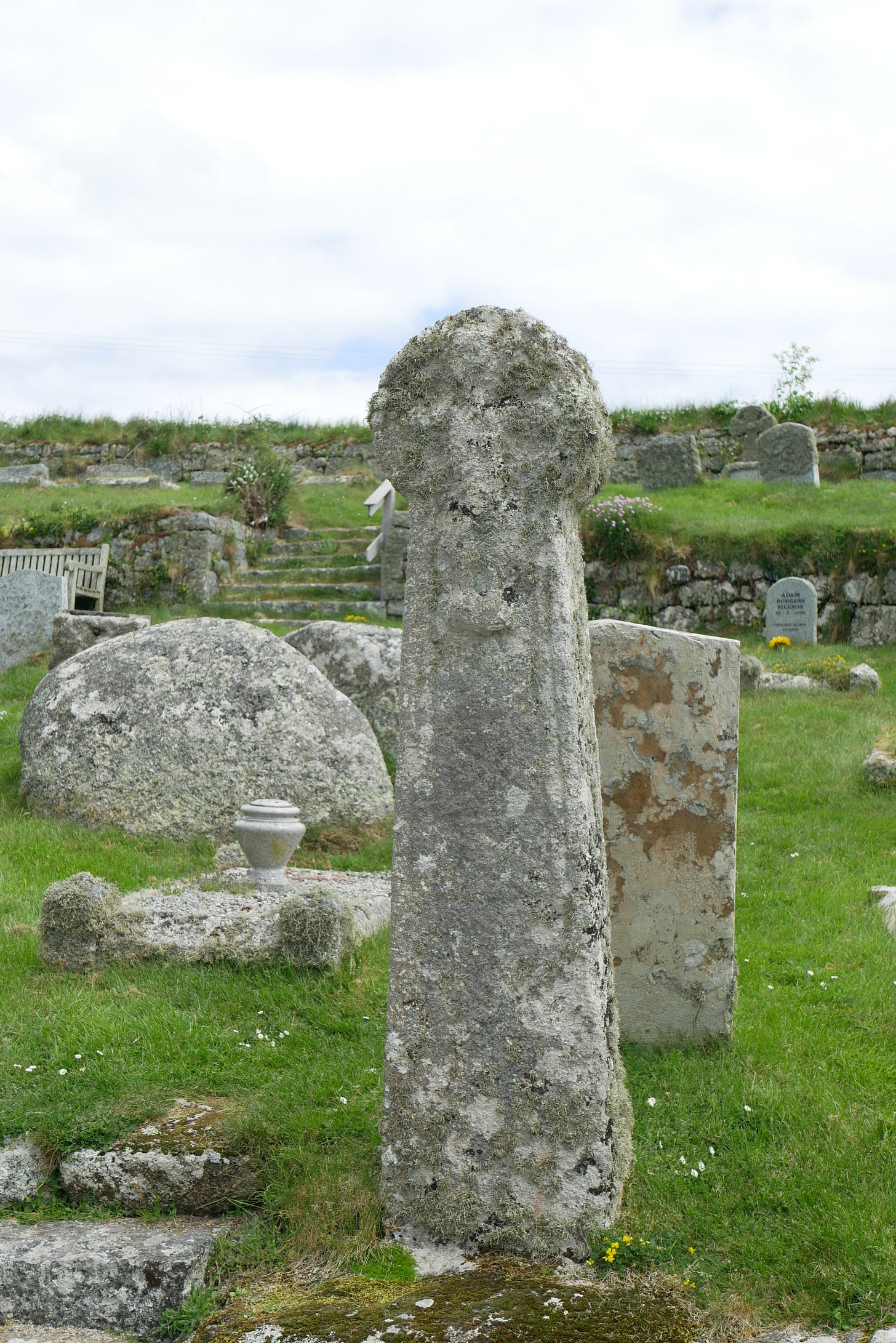
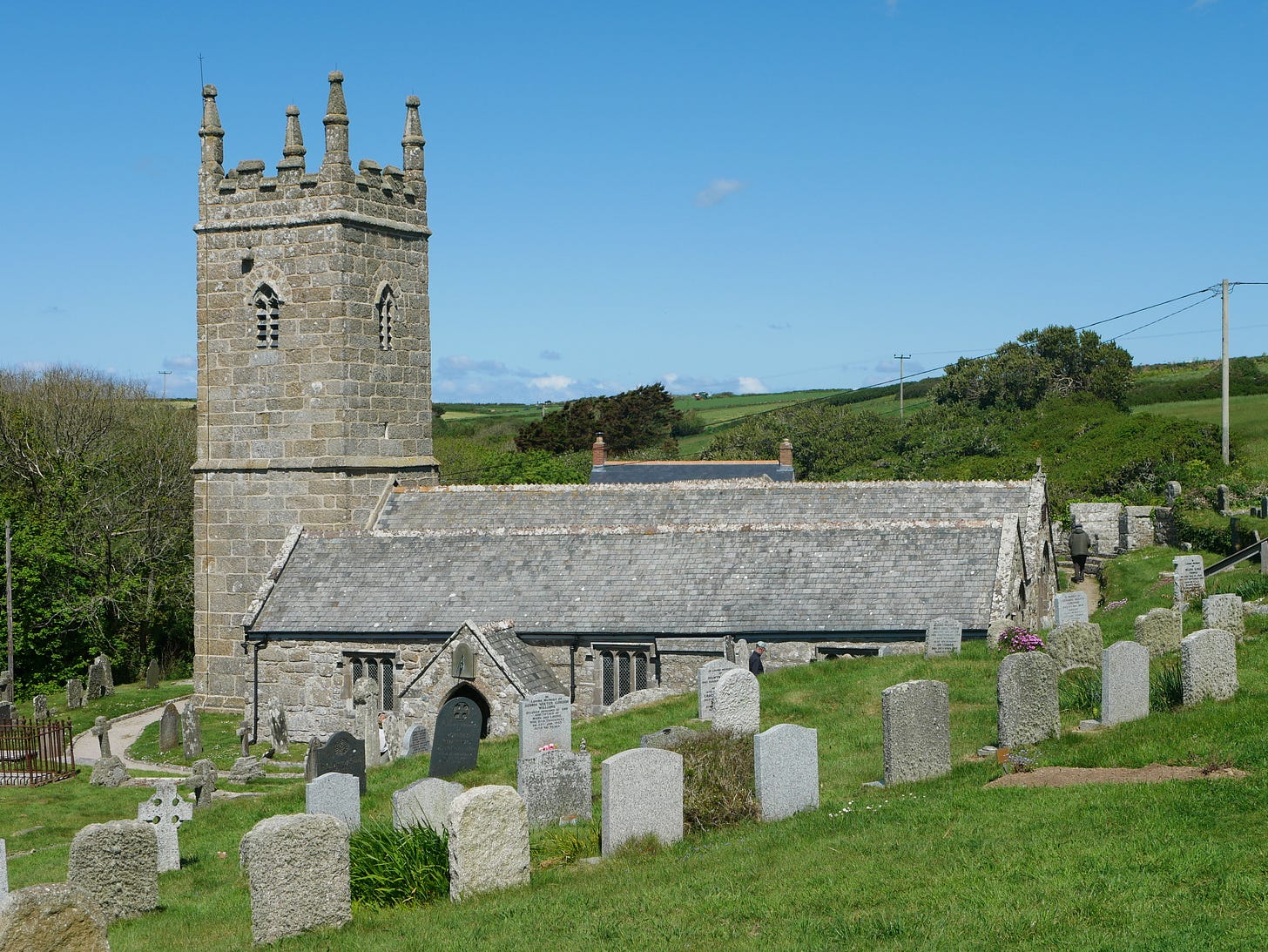
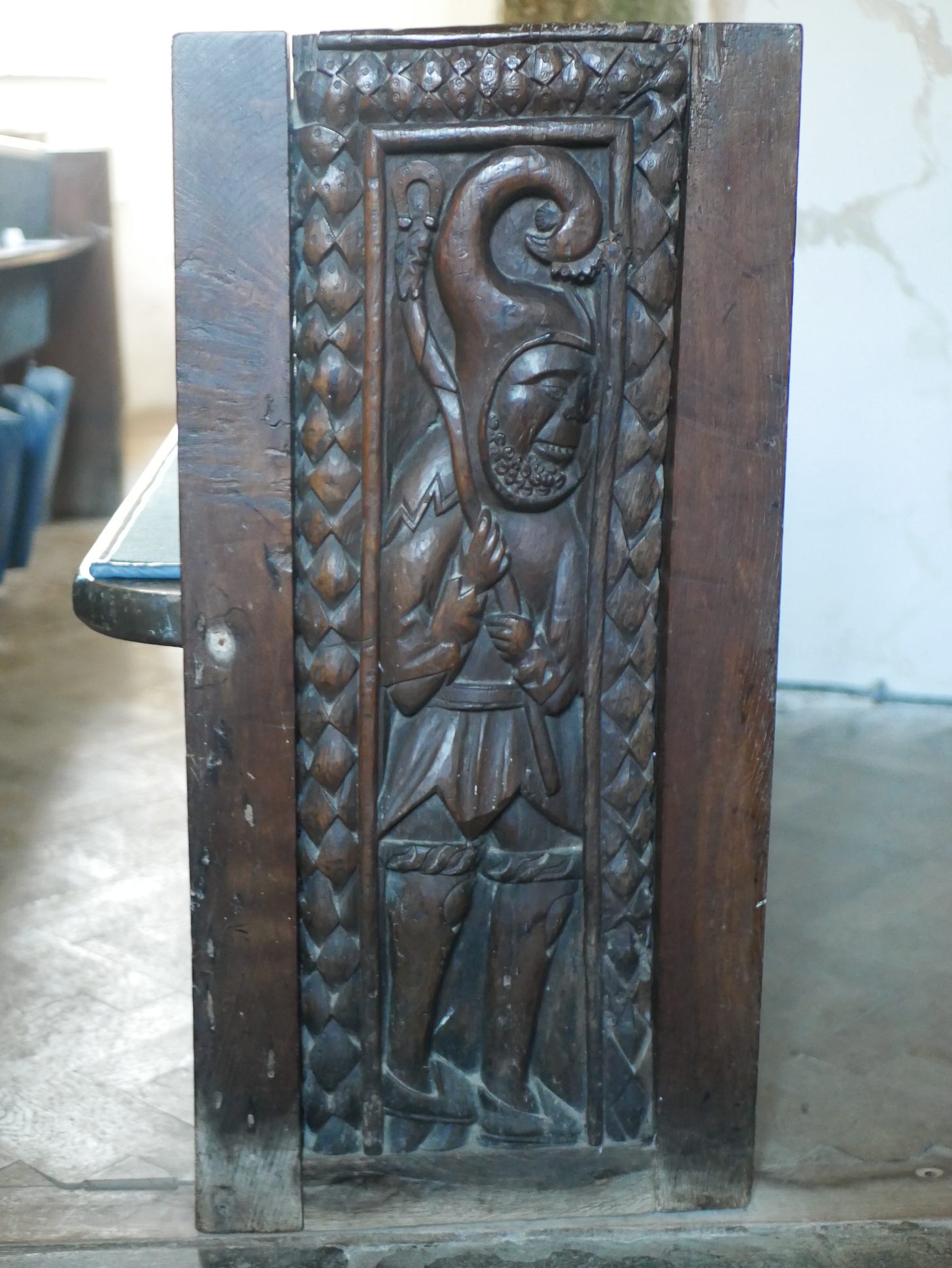
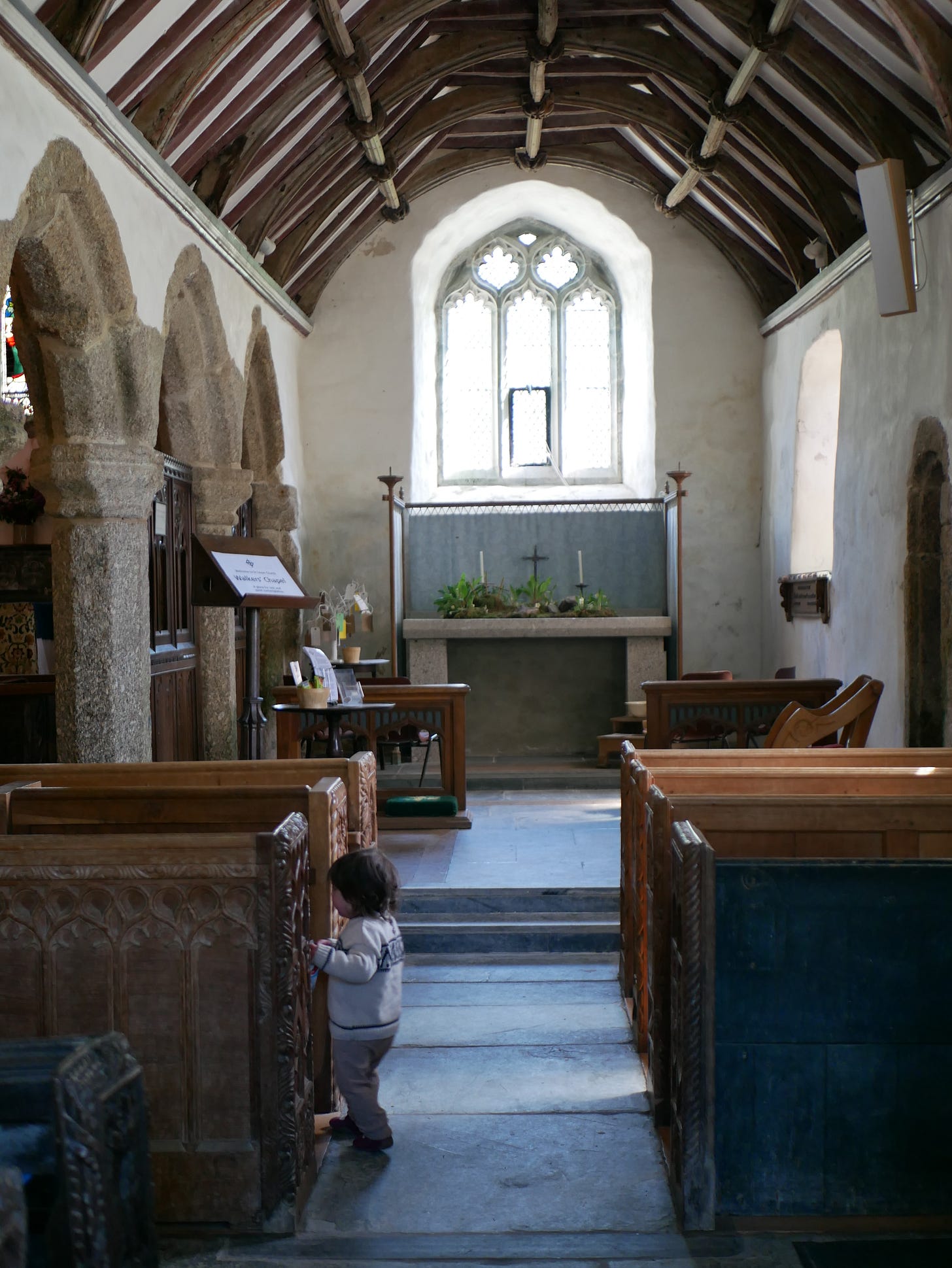
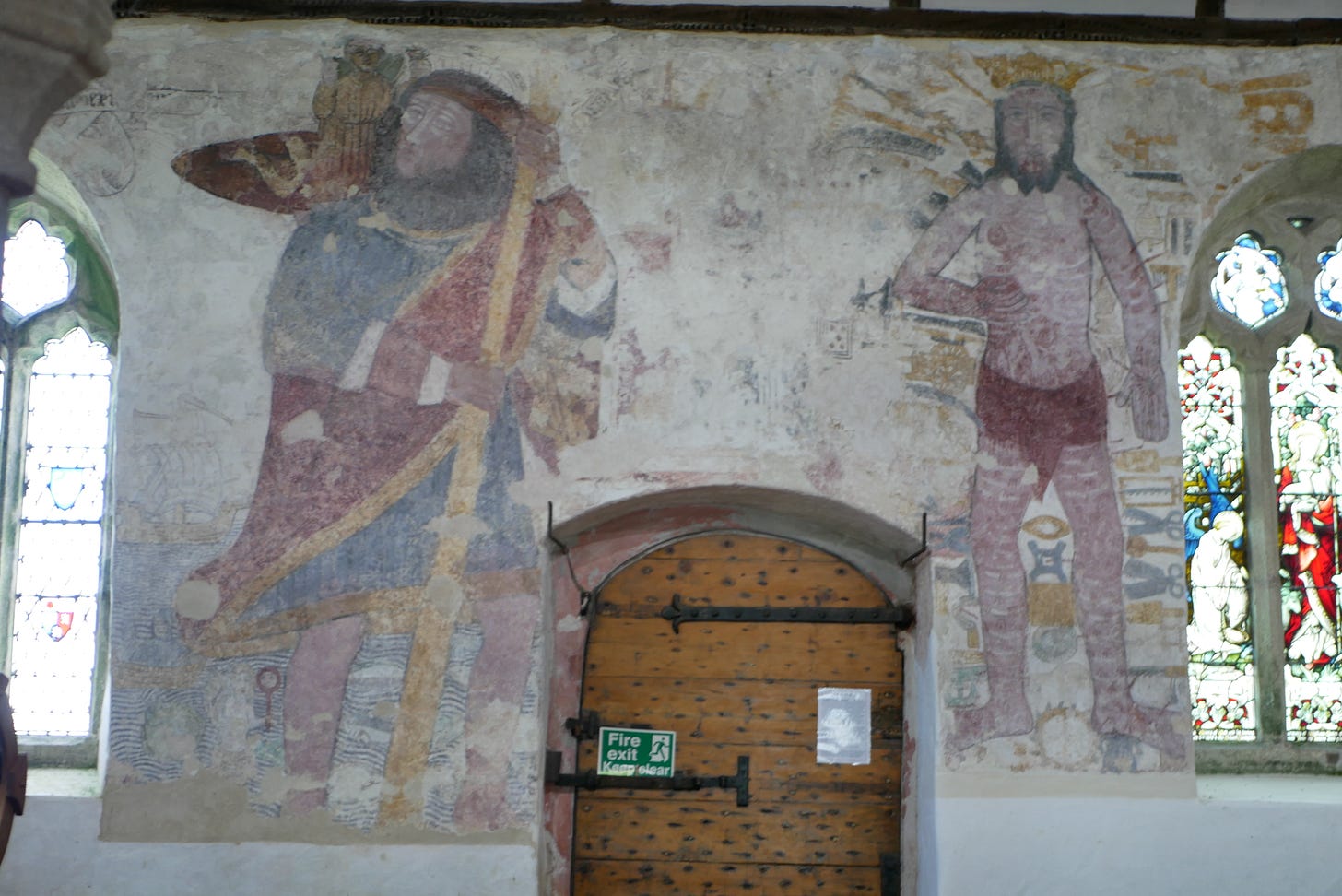
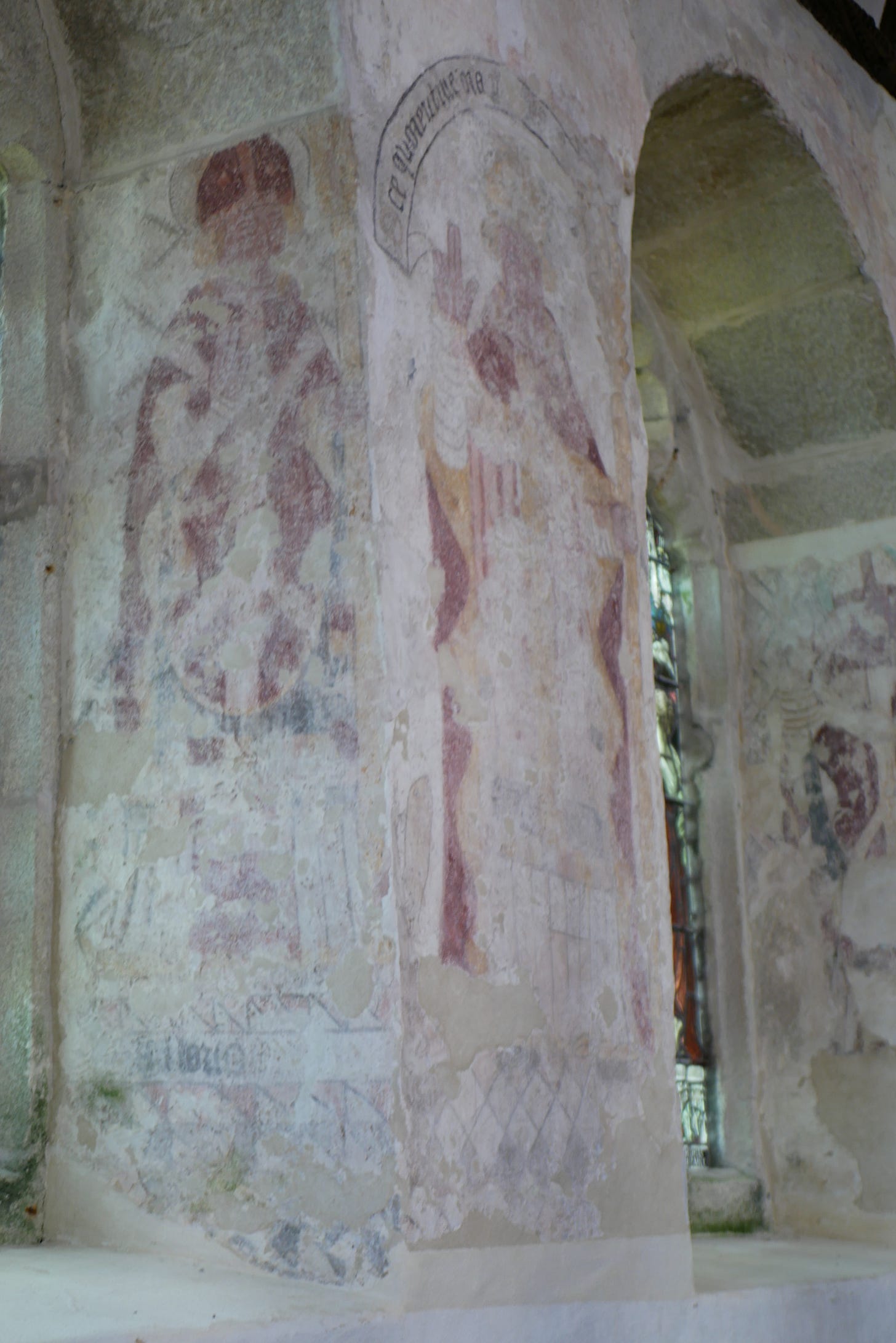
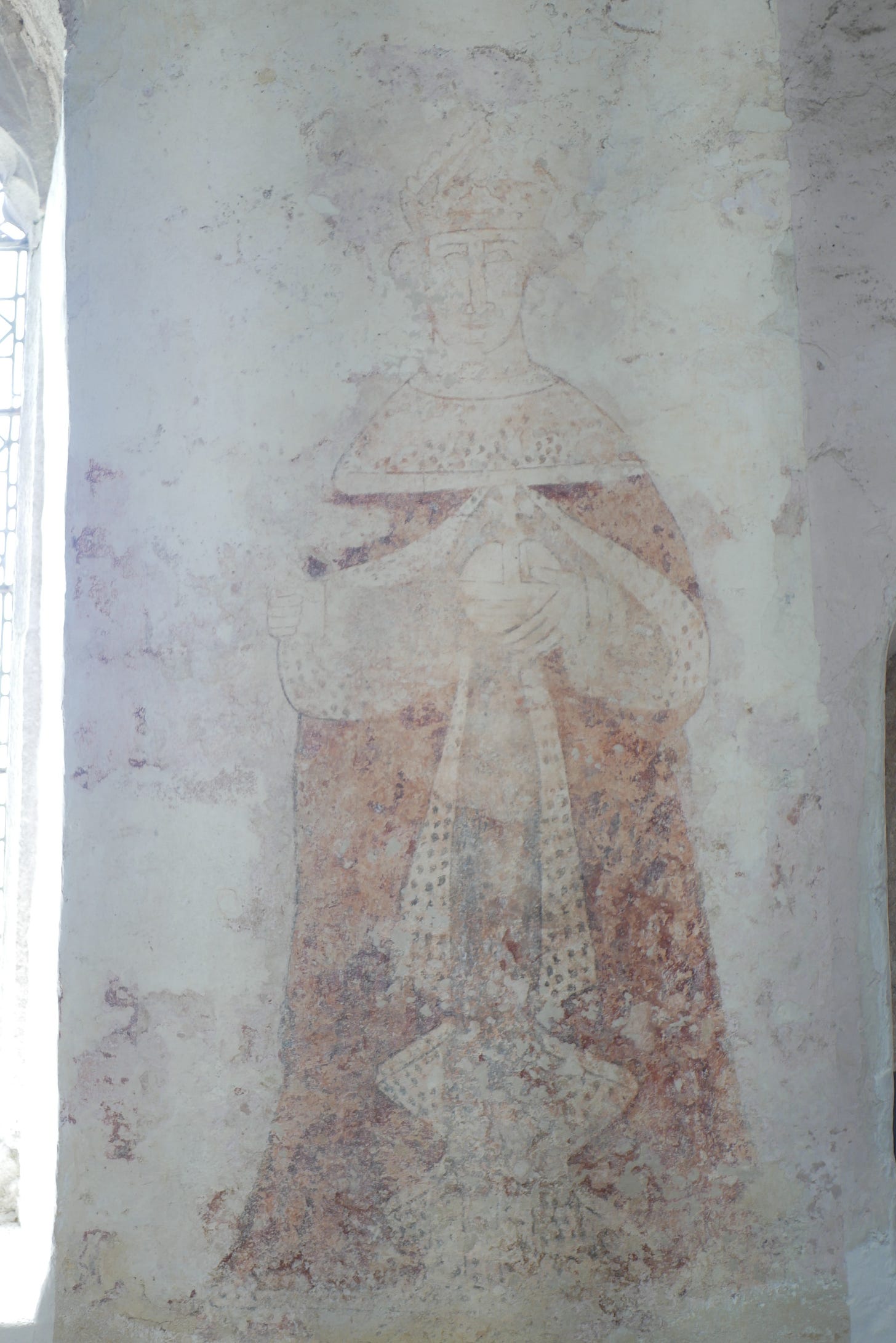

What a lovely little read this Sunday morning. Fascinating and with lovely pictures too!
Thank you for sharing this! I’m always fascinated to walk through churchyards in the American Midwest, with birthdates in the 1700s. You get to explore ancient churchyards! Do you bring your children along for these trips? I can imagine it would be fun to grow up with such a tour-guide.